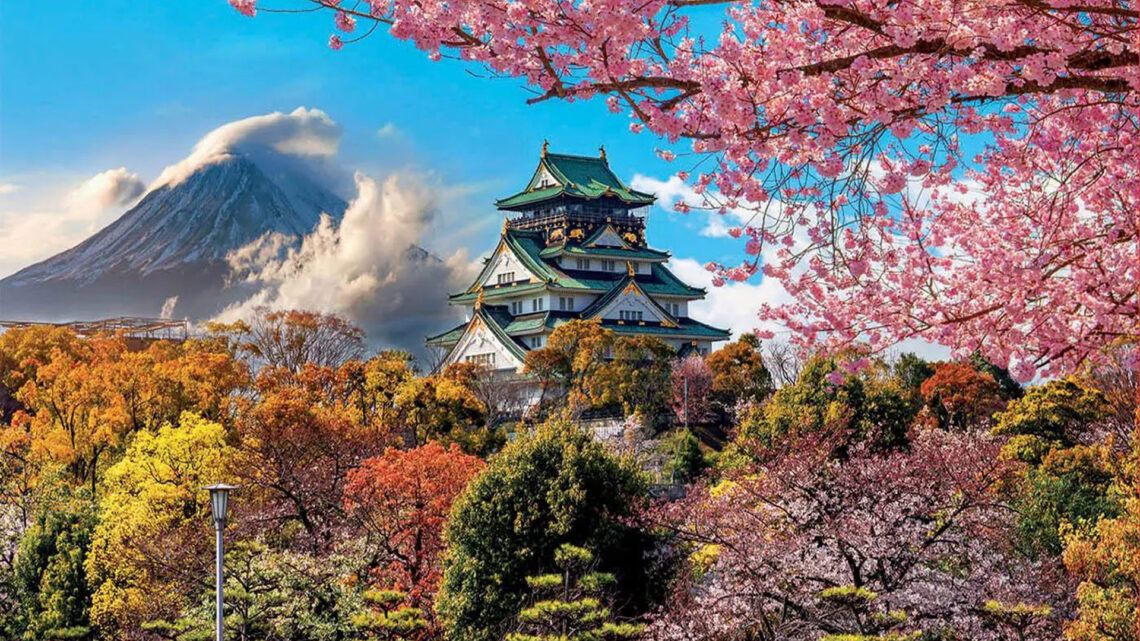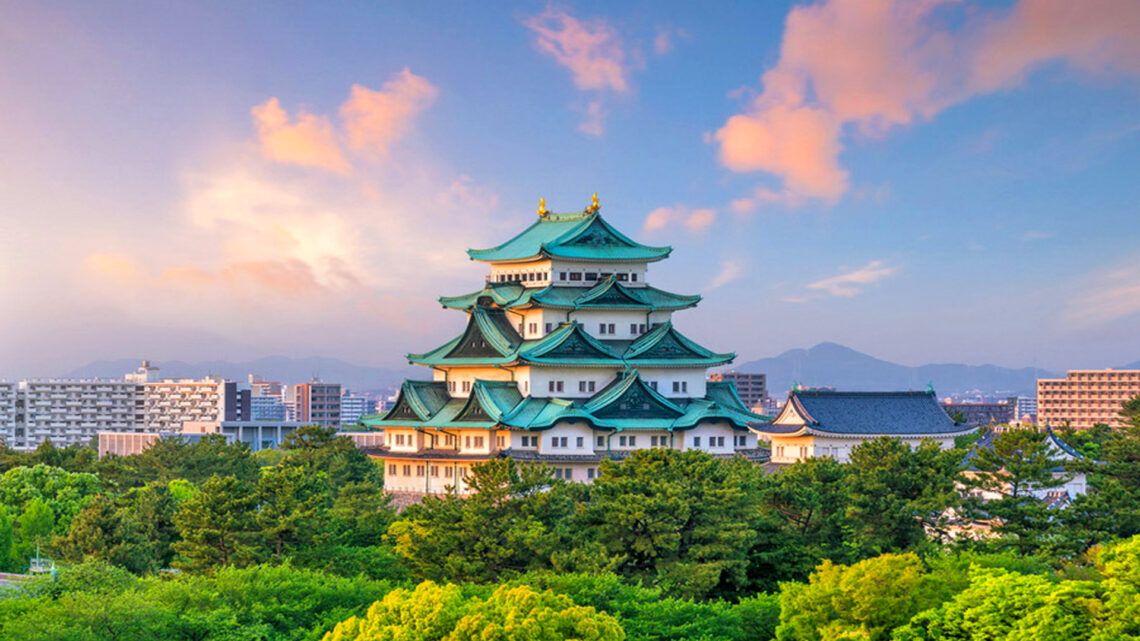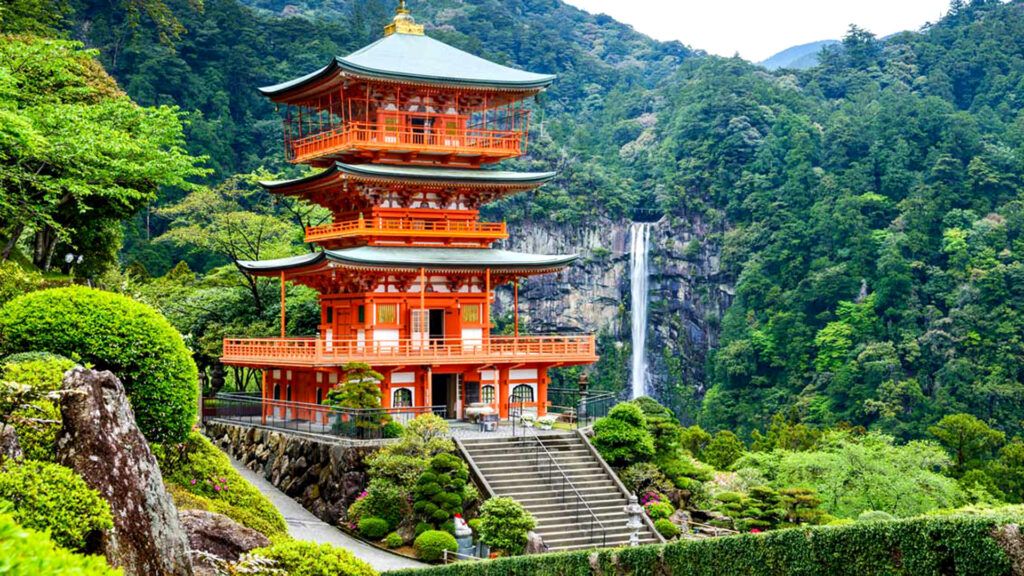
Ise Jingu, also known as the Ise Shrine, is one of Japan’s most significant and sacred Shinto shrines. Located in the city of Ise in Mie Prefecture, it comprises two main shrines: the Inner Shrine (Naiku) and the Outer Shrine (Geku). The Ise Shrine is dedicated to Amaterasu Omikami, the sun goddess and the ancestral deity of the Japanese imperial family. Due to its immense cultural and religious significance, the shrine attracts millions of pilgrims and tourists each year.
The Naiku, or Inner Shrine, is the oldest and most important part of Ise Jingu. It is situated in a dense, sacred forest and houses the sacred mirror, one of Japan’s three imperial regalia. The Geku, or Outer Shrine, is dedicated to Toyouke Omikami, the goddess of food, clothing, and shelter. Both shrines are completely rebuilt every 20 years in a Shinto ritual known as Shikinen Sengu. This tradition, dating back to the shrine’s founding in the 7th century, symbolizes the belief in continuous renewal and the cycle of life and death.
The Ise Jingu area is vast, encompassing more than 125 smaller shrines spread over an area of about 5,500 hectares. Most of these shrines also undergo the Shikinen Sengu and are regularly renewed. The construction and maintenance of the shrine system involve numerous rituals and ceremonies held throughout the year.
The Naiku is located about six kilometers south of the Geku, and both shrines are connected by the picturesque Ujibashi Bridge, which spans the Isuzu River. The bridge itself is also renewed every 20 years and is an important symbol of transition and spiritual journey. Access to the inner area of the shrines is reserved for priests and members of the imperial family, but visitors can explore the outer areas and participate in various rituals and festivals.
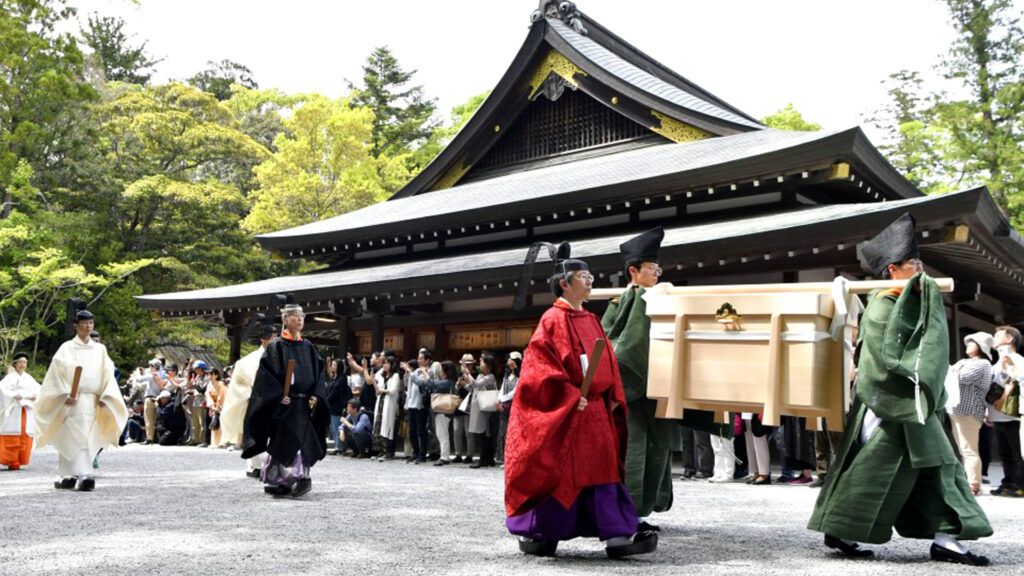
Ise Jingu is not only a religious center but also a place of historical and cultural importance. Many traditional rituals and festivals held here have remained unchanged for centuries, offering insight into Japan’s rich spiritual history. One of the most well-known festivals is the Ise Jingu Kagura, a dance ritual performed in honor of the deities. Another significant event is the Oharae, a purification ritual held twice a year for spiritual cleansing and renewal.
The architecture of Ise Jingu is an outstanding example of traditional Japanese style, known as Shinmei-zukuri. This style is characterized by its simplicity and natural elegance. The buildings are constructed from unpainted cypress wood (Hinoki) with thatched roofs. The construction is carried out without nails or metal fittings, using only wooden joints and dowels, reflecting the craftsmanship and deep connection to nature.
The surroundings of Ise Jingu are as impressive as the shrines themselves. The sacred forest where the Naiku is located is an ancient, untouched forest home to a variety of plant and animal species. This forest is regarded as a living sanctuary and symbolizes the harmony between humans and nature. Visitors can explore the serene walking paths through the forest and soak in the spiritual atmosphere.
Pilgrimage to Ise Jingu has a long tradition and is an essential part of the religious life of many Japanese people. In the past, the journey to the shrine was a strenuous and challenging undertaking, often taking several weeks. Nowadays, the shrine is easily accessible by public transport, but the spiritual significance of the pilgrimage remains unchanged. Many pilgrims participate in traditional purification rituals before entering the shrine and bring offerings such as rice, sake, and fabrics to honor the deities.
Ise Jingu is also a center for Shinto education and research. Shinto priests are trained here, and there are numerous facilities dedicated to the study and preservation of Shinto traditions. The shrine is also an important venue for diplomatic and cultural events, often attended by the imperial family and international dignitaries.
The significance of Ise Jingu extends beyond the religious sphere and has a profound influence on Japanese art and culture. Many traditional art forms, such as Ise-Katagami (stencil patterns) and Ise pearls, originate from the region and are closely linked to the rituals and festivals of the shrine. Traditional Japanese garden art and landscape design have also been influenced by the aesthetics of Ise Jingu.
Ise Jingu plays a central role in the Japanese New Year (Shogatsu), one of the most important festivals in the Japanese calendar. During this time, millions of people visit the shrine to pray for good fortune and health in the new year. The first prayer of the year, known as Hatsumode, is a significant ritual where people express their wishes and hopes for the coming year.
The relationship between Ise Jingu and the Japanese imperial family is of particular importance. The shrine is considered the spiritual origin of the imperial family and is closely associated with the mythology and legends of the deity Amaterasu. Each year, a member of the imperial family visits the shrine to perform special rituals and renew the connection between heaven and earth.
Ise Jingu is a living testament to Japanese spirituality and culture. Its continuous renewal and the preservation of centuries-old traditions make it a unique place that reflects the essence of Shintoism and the deep connection of the Japanese people with their spiritual history. Whether as a pilgrim, tourist, or researcher, a visit to Ise Jingu offers a profound and inspiring experience that goes far beyond merely visiting a historical site.
The Geographical Location of Ise Jingu
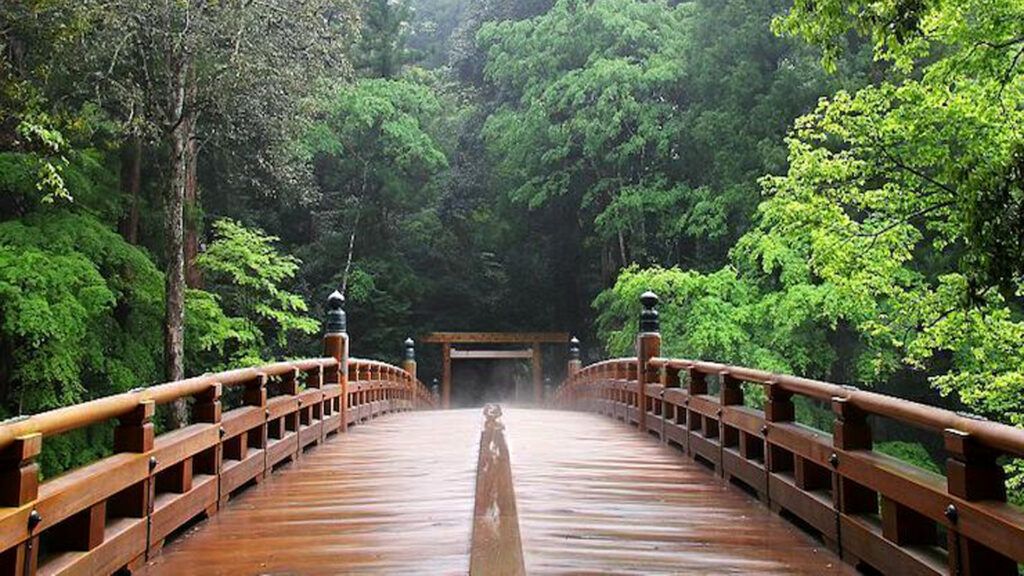
The Ise Jingu Shrine is located in the city of Ise in Mie Prefecture, at the heart of Japan’s main island, Honshu. The city of Ise lies along the Ise Bay and is surrounded by the picturesque coastal landscapes of the bay and the mountainous areas of the Kii Peninsula. This geographical setting greatly influences the spiritual and cultural significance of Ise Jingu, providing a natural environment that has been considered sacred and inspiring for centuries.
Mie Prefecture stretches along the eastern coast of Japan and borders the prefectures of Aichi, Gifu, Shiga, Kyoto, Nara, and Wakayama. It is known for its diverse landscape, ranging from coastal areas and fertile plains to forested mountains and river valleys. The region offers a rich variety of natural resources, which play an important role in the rituals and traditions of Ise Jingu.
The Naiku (Inner Shrine) and the Geku (Outer Shrine) of Ise Jingu are approximately six kilometers apart. The Naiku is situated in the southern part of Ise city, nestled in a dense, sacred forest known as “Uji-Yamada.” This forest is ancient and nearly untouched, home to a variety of plant and animal species. The Isuzu River flows through this sacred forest, contributing to the shrine’s spiritual atmosphere. The Geku, on the other hand, is located closer to the city center of Ise and is surrounded by a somewhat more open forest area.
The geographical location of Ise Jingu along the coast of Ise Bay also plays a significant role in the shrine’s symbolism and rituals. The proximity to the sea is often seen as a connection to the origins of life and to the goddess Amaterasu, who is regarded in Shinto mythology as the giver of light and life. Access to the bay allowed people in ancient times to bring fish and seafood as offerings, which continue to play an important role in the shrine’s rituals today.
The region around Ise Jingu is rich in natural attractions and historical sites, making the pilgrimage to the shrine a comprehensive spiritual journey. In addition to the shrines themselves, nearby attractions include the Meoto Iwa (Married Couple Rocks), two rocks in the sea connected by a rope, which are viewed as sacred symbols of the union between human and deity. These rocks are a popular destination for pilgrims and tourists exploring the spiritual significance of the area.
The city of Ise and its surroundings are also known for their hot springs (onsen), providing an additional attraction for visitors. These natural thermal springs offer relaxation and rejuvenation, exemplifying the harmonious connection between nature and spirituality that is so prominent in the region.
The geographical location of Ise Jingu also holds historical significance, making the shrine an important hub in Japanese history. The city of Ise was situated on one of Japan’s most crucial trade and pilgrimage routes, drawing people from all over the country for centuries. This historical role as a center for trade, culture, and spirituality has shaped the development of the city and the entire region.
Thus, the geographical location of Ise Jingu significantly contributes to its importance and appeal. The combination of sea, rivers, forests, and mountains creates a unique environment that is both spiritually and naturally inspiring. Visitors to the shrine experience not only the religious and cultural aspects of this sacred place but also the impressive beauty and diversity of the Japanese landscape, which has been an integral part of Shinto spirituality for centuries.
Journey to Ise Jingu
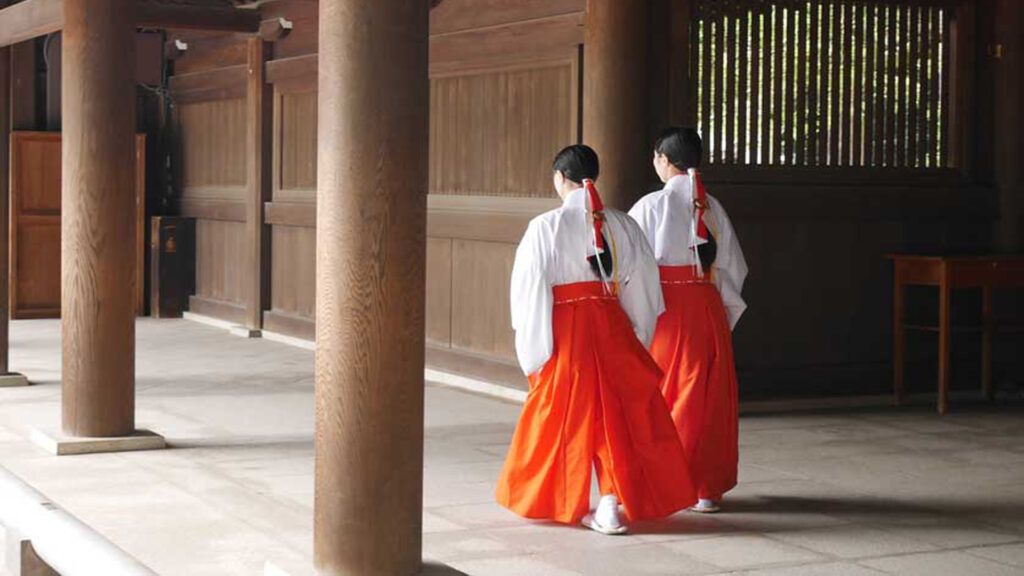
The trip to Ise Jingu is often regarded by many visitors as an integral part of their spiritual experience. Whether traveling from a nearby city or from more distant regions, the journey to Ise Jingu is well-served by various modes of transportation and offers many opportunities to experience the landscape and culture of Japan.
By Train
The most convenient and common way to reach Ise Jingu is by train. From Tokyo, one can take the Shinkansen, the high-speed bullet train, to Nagoya. This trip takes about two hours. In Nagoya, you transfer to the Kintetsu Limited Express trains, which go directly to Ise. The ride from Nagoya to Ise takes approximately one and a half hours and passes through scenic landscapes, including mountains, rivers, and rural areas. Another option is the JR Rapid Mie train, which also travels directly from Nagoya to Ise.
From Osaka or Kyoto, there are also direct connections to Ise. The Kintetsu Limited Express trains offer a quick and comfortable way to reach the city, and the journey takes about two hours. During the ride, you can enjoy the varied landscape of Kansai, which ranges from urban areas to green hills.
By Car
Driving to Ise offers more flexibility and the opportunity to visit various attractions along the way. From Tokyo, take the Tomei Expressway and then switch to the Ise Expressway, which leads directly to the city of Ise. The drive takes about five to six hours, depending on traffic conditions. From Osaka or Kyoto, the route follows the Meishin Expressway and then the Ise Expressway, taking approximately two to three hours.
A car trip provides the chance to make stops along the way and explore the surroundings. Popular stops include the city of Nagoya, known for its castle and diverse culinary scene, as well as the Suzuka Circuit, a famous motorsport racetrack. Additionally, the coastal road offers stunning views of Ise Bay.
By Bus
There are also numerous bus routes to Ise, from both Tokyo and Osaka or Kyoto. Long-distance buses offer a cost-effective alternative to trains and cars and are particularly appealing to travelers on a budget. These buses are usually comfortable and provide overnight journeys, allowing you to arrive rested at your destination. The trip from Tokyo to Ise takes about eight to nine hours, while the journey from Osaka or Kyoto takes about four to five hours.
Arrival in Ise
Upon arriving in the city of Ise, there are several train stations relevant to visitors of Ise Jingu. Iseshi Station and Ujiyamada Station are the two main stations located near the shrines. From these stations, there are convenient bus and taxi connections directly to the shrines.
Exploring the Shrine Grounds
After arriving in Ise, the actual pilgrimage to the shrines begins. The Outer Shrine (Geku) is typically the first point of contact, as it is closer to the city center. From there, a short bus or taxi ride leads to the Inner Shrine (Naiku). However, many visitors prefer to walk the approximately six kilometers between the shrines to fully experience the spiritual journey. This path winds through picturesque streets and passes traditional shops and restaurants offering local specialties.
Spiritual Preparation
A crucial part of the pilgrimage is the spiritual preparation. Many visitors participate in a purification ritual before entering the shrines to cleanse themselves both inwardly and outwardly. There are facilities for ritual cleansing at various points along the way, including wells and basins where you can wash your hands and mouth.
Exploring the Surroundings
In addition to the shrines themselves, the area around Ise Jingu offers many other attractions and activities. The Okage Yokocho, a traditional marketplace near the Naiku, features a variety of shops and restaurants selling local products and souvenirs. Here, visitors can sample traditional Japanese sweets, handcrafted items, and regional specialties.
my Conclusion
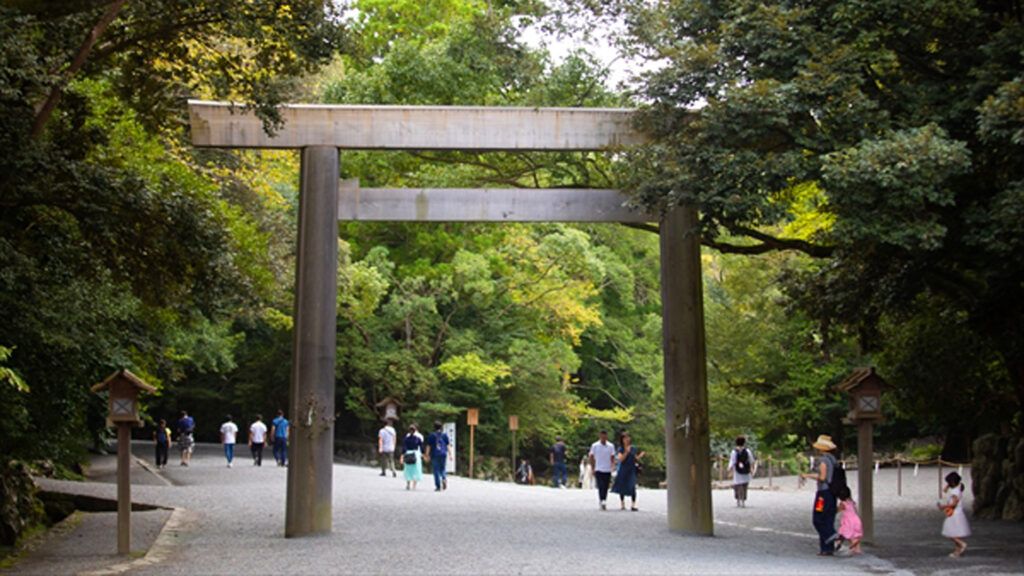
The journey to Ise Jingu is much more than just a physical trip; it is a spiritual and cultural experience deeply rooted in Japanese tradition. Regardless of the mode of transportation chosen, the journey offers numerous opportunities to enjoy the beauty and diversity of the Japanese landscape and culture. The trip itself is often considered an essential part of the pilgrimage, preparing the spirit for the forthcoming encounter with one of Japan’s most sacred sites.


